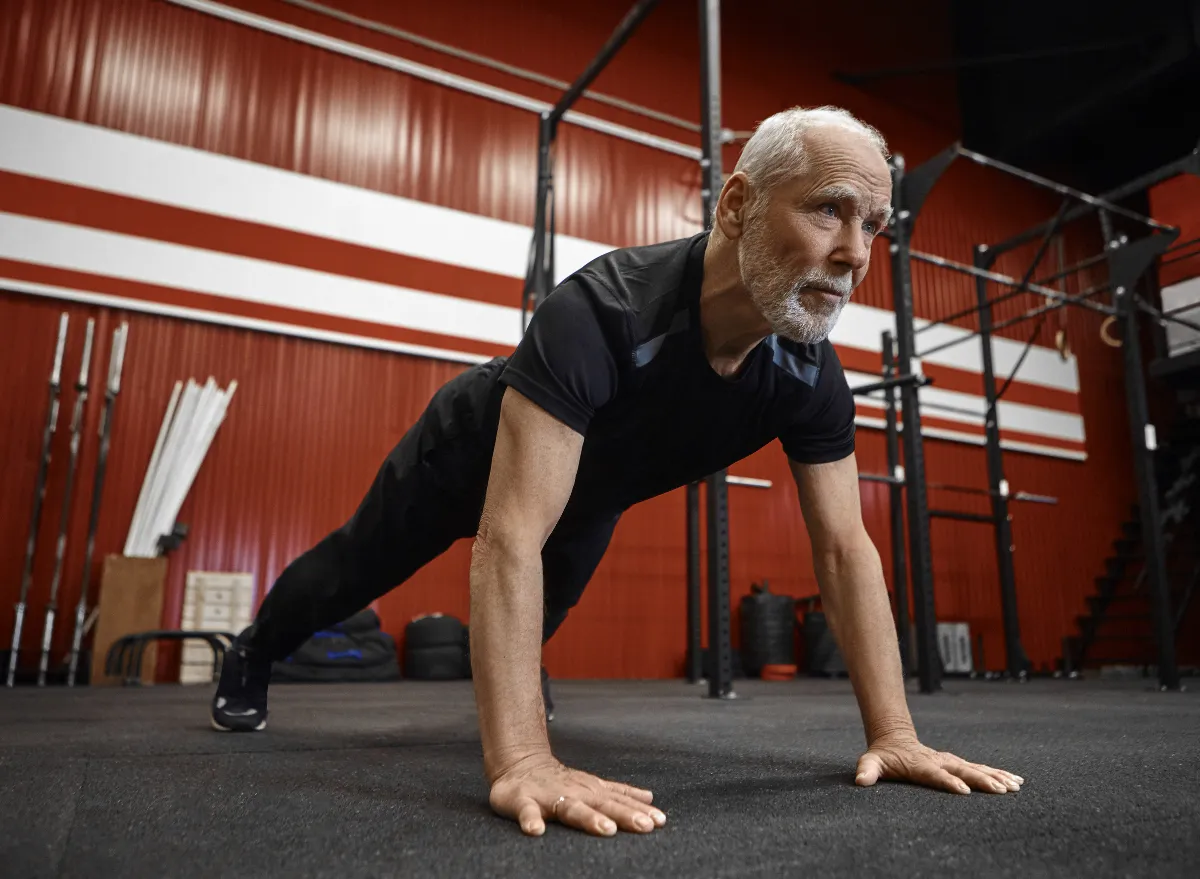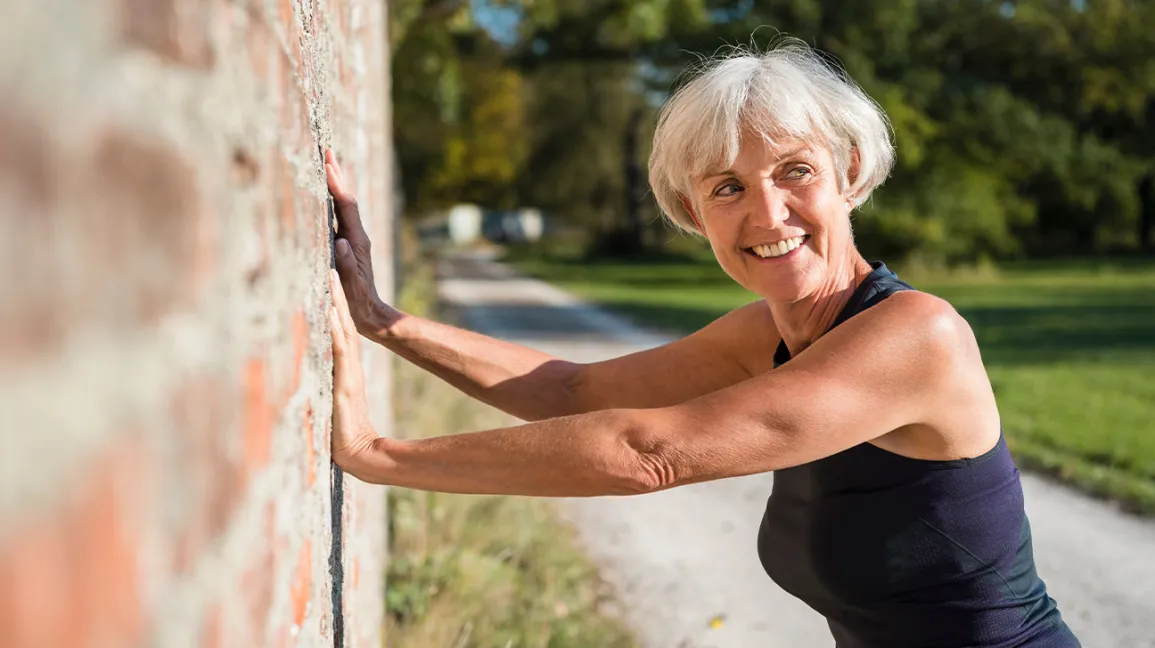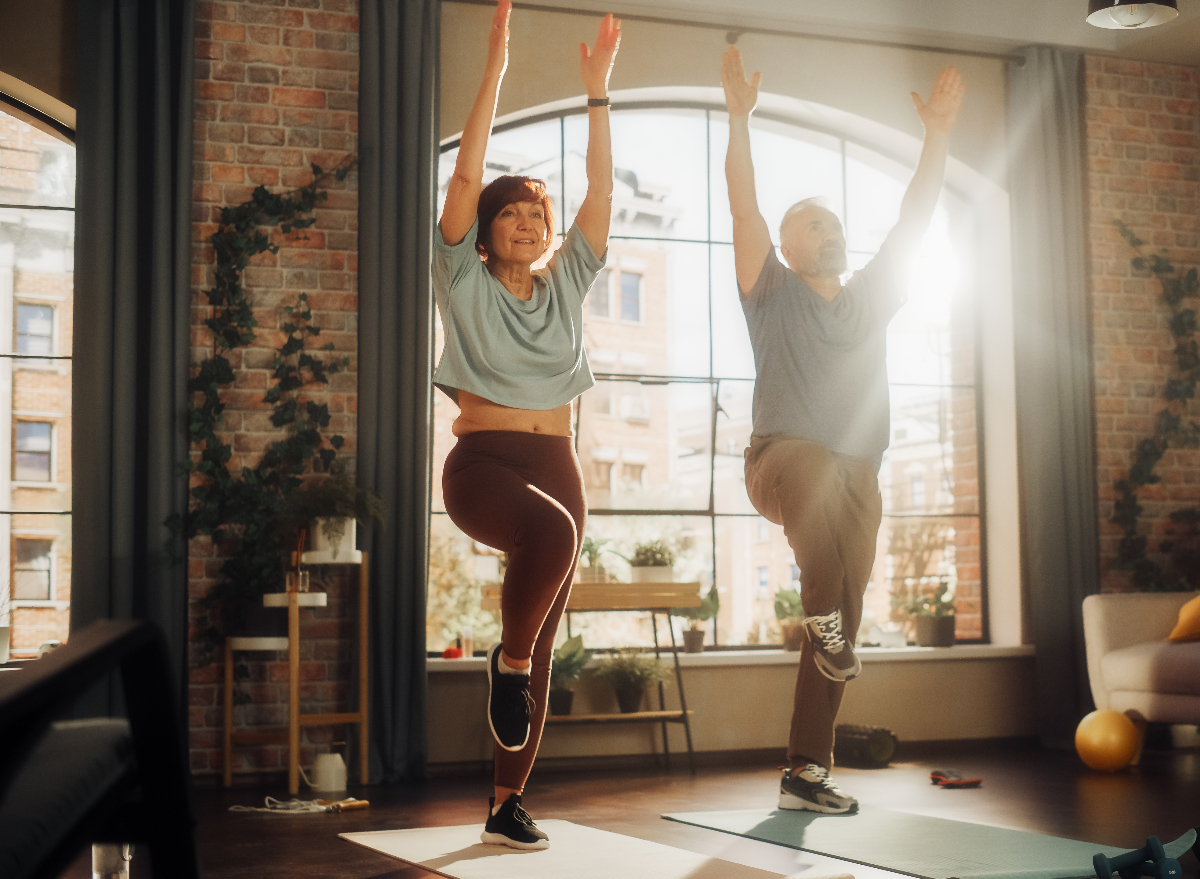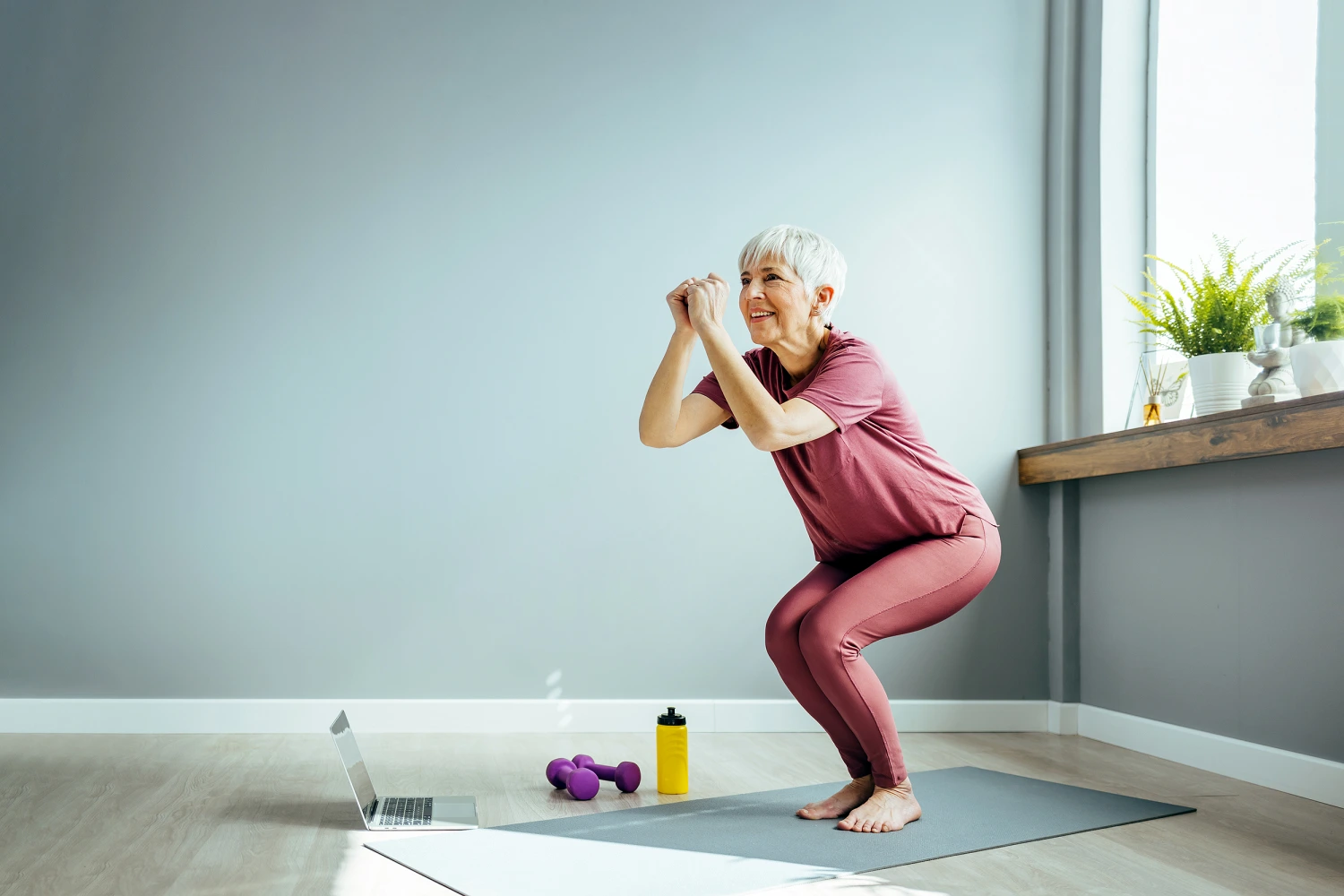As we age, it becomes even more crucial to prioritize our health and well-being. And when it comes to maintaining independence and enjoying a high quality of life, exercise plays a vital role for seniors. But with so many options out there, how do you know which exercises are best for you? Well, you’re in the right place. Today I’ll share the top exercises specifically tailored for seniors, focusing on strength, mobility, balance, and aerobic activity. These exercises will help you stay active, healthy, and independent for years to come.

Contents
12 Best Exercises for Seniors
When it comes to choosing the best exercises for seniors, it’s important to focus on those that promote strength, mobility, and balance. Here are some key exercises that are beneficial for seniors:
1. Abdominal Contractions
Abdominal contractions are a simple yet effective exercise that can be done anywhere. This exercise helps strengthen the core muscles and improves posture. Here’s how to do it:
- Sit upright in a chair with your feet flat on the ground.
- Take a deep breath and tighten your abdominal muscles.
- Hold for a few seconds, then release.
- Repeat for 10-15 repetitions.
2. Wall Pushups
Wall pushups are a great exercise for building upper body strength without straining your joints. They target the chest, shoulders, and arms. Here’s how to do them:
- Stand at arm’s length from a wall, with your feet shoulder-width apart.
- Place your hands on the wall slightly wider than shoulder-width apart.
- Lean forward, keeping your body straight, and lower your chest towards the wall.
- Push back to the starting position and repeat for 10 repetitions.

3. Pelvic Tilts
Pelvic tilts are excellent for strengthening the lower back and abdominal muscles while improving flexibility. Here’s how to perform pelvic tilts:
- Lie on your back with your knees bent and feet flat on the ground.
- Tighten your abdominal muscles and press your lower back into the floor.
- Hold for a few seconds, then release.
- Repeat for 10-15 repetitions.
4. Shoulder Blade Squeeze
The shoulder blade squeeze exercise helps improve posture and strengthen the muscles in the upper back. Here’s how to do it:
- Sit or stand upright with your arms by your sides.
- Squeeze your shoulder blades together, as if you’re trying to hold a pencil between them.
- Hold for a few seconds, then release.
- Repeat for 10-15 repetitions.
5. Toe Taps
Toe taps are a simple exercise that promotes leg strength and flexibility. Here’s how to perform toe taps:
- Sit on a chair with your feet flat on the ground.
- Lift one foot off the ground and tap your toes on the floor in front of you.
- Return your foot to the starting position.
- Repeat with the other foot for 10-15 repetitions.
6. Heel Raises
Heel raises are beneficial for strengthening the calf muscles and improving balance. Here’s how to do them:
- Stand behind a chair, with your feet hip-width apart and hands resting on the chair for support.
- Raise your heels off the ground, lifting up onto your toes.
- Hold for a few seconds, then lower your heels back down.
- Repeat for 10-15 repetitions.
7. Knee Lifts
Knee lifts are ideal for improving balance and strengthening the hip muscles. Here’s how to perform knee lifts:
- Stand behind a chair, with your feet hip-width apart and hands resting on the chair for support.
- Lift one knee up towards your chest, keeping your back straight.
- Hold for a few seconds, then lower your foot back down.
- Repeat with the other knee for 10-15 repetitions.

8. Shoulder and Upper Back Stretch
This stretch helps relieve tension in the shoulder and upper back muscles. Here’s how to do it:
- Sit or stand upright, with your hands by your sides.
- Reach one arm across your body, placing your other hand on your upper arm.
- Gently pull the arm towards your chest until you feel a stretch in your shoulder and upper back.
- Hold for 20-30 seconds, then switch sides.
9. Ankle Rotations
Ankle rotations help improve ankle mobility and prevent stiffness. Here’s how to perform ankle rotations:
- Sit on a chair with your feet lifted off the ground.
- Rotate your ankles in a circular motion, clockwise and then counterclockwise.
- Repeat for 10-15 rotations in each direction.
10. Neck Stretch
The neck stretch exercise helps relieve tension in the neck and improves flexibility. Here’s how to do it:
- Sit or stand upright, with your hands by your sides.
- Tilt your head towards one shoulder, bringing your ear closer to your shoulder.
- Hold for 20-30 seconds, then switch sides.
11. Upper Back
Strengthening the upper back muscles is essential for maintaining good posture. Here’s a simple exercise to target the upper back:
- Sit or stand upright, with your hands by your sides and elbows bent.
- Squeeze your shoulder blades together, pulling your elbows back.
- Hold for a few seconds, then release.
- Repeat for 10-15 repetitions.
12. Shifting Weight
Shifting weight from side to side is a great exercise for improving balance and stability. Here’s how to perform weight shifts:
- Stand with your feet hip-width apart.
- Shift your weight onto one leg, lifting the other foot slightly off the ground.
- Hold for a few seconds, then shift your weight to the other leg.
- Repeat for 10-15 shifts on each leg.
Benefits of Exercise for Seniors
Here are some of the key advantages of exercise for older adults:

- Increased Energy Levels: By incorporating exercise into your routine, you can boost your energy levels and combat feelings of fatigue. Regular physical activity helps improve circulation and oxygen flow, making you feel more alert and vibrant.
- Reduced Risk of Chronic Disease: Exercise has been shown to lower the risk of chronic conditions such as heart disease, diabetes, and certain types of cancer. Maintaining an active lifestyle can help manage blood pressure, improve cholesterol levels, and enhance overall cardiovascular health.
- Better Quality Sleep: Physical activity can improve sleep patterns and enhance the quality of your rest. Regular exercise promotes the release of endorphins, which can reduce stress and anxiety, allowing for a more restful night’s sleep.
- Reduced Joint Pain: Engaging in low-impact exercises like swimming or cycling can help alleviate joint pain and stiffness. Exercise stimulates the production of synovial fluid, which lubricates the joints and reduces discomfort associated with conditions such as arthritis.
- Strong Bones and Muscles: Aging can lead to a loss of muscle mass and bone density, increasing the risk of fractures and osteoporosis. Incorporating resistance training and weight-bearing exercises into your routine can help build and maintain muscle strength, improve balance, and support bone health.
- Boosted Brain Health and Cognitive Function: Regular physical activity has been linked to improved brain health and cognitive function. Exercise increases blood flow to the brain, promoting the growth of new nerve cells and enhancing memory, attention, and problem-solving skills.
- Improved Mental Health and Quality of Life: Exercise has a positive impact on mental well-being, reducing symptoms of anxiety and depression. It can also boost self-esteem, increase social interaction, and provide a sense of purpose – leading to an overall improved quality of life.
Frequently Asked Questions
What is the AARP #1 exercise for seniors?
The AARP recommends the abdominal contraction exercise as the number one exercise for seniors. This exercise helps strengthen the core muscles, improve posture, and support better balance.
Why should seniors avoid abdominal crunches?
Seniors should avoid abdominal crunches because they can put strain on the neck, spine, and back. Instead, they should focus on exercises that target the core muscles without putting excessive pressure on these areas.
How far should a 72-year-old walk daily?
The distance a 72-year-old should walk daily depends on their health and fitness level. However, starting with a goal of at least 30 minutes of moderate-intensity walking, or around 2,000 to 3,000 steps, is a good target to aim for. Gradually increase the duration and intensity based on individual capabilities.

Hello, I’m Ravindra. Over the years, I’ve immersed myself deeply into the world of fitness and health, transforming both my body and mind. Writing has allowed me to share my journey, insights, and expertise with those just starting out and seasoned fitness enthusiasts alike. Beyond just routines and diets, I believe in inspiring others to adopt a holistic approach to well-being.
